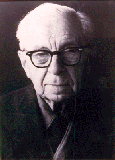
The kid has an artist as a hero? What the hell kind of kid is that? —Never heard of Chesley Bonestell? Too bad. When I was a kid (we’re talking Eisenhower administration here), he was my hero. He was an artist. He was the best damned artist I ever saw. Forget all those French types and their scenery, and the Italians and their virgins. Chesley Bonestell painted space. Mostly it was real, scientifically accurate, or at least as accurate as you could get in those days. Two of his best paintings are posted here so you can see what I mean. He is credited with being one of the four men who drove America to the moon. He can be credited with making me a science writer, perhaps his least accomplishment.
In 1949, science writer Willy Ley produced a book called The Conquest of Space, illustrated by Bonestell (pronounced bah-nes-tel), who used a technique I would call space realism. We hadn’t been in space but Bonestell painted like he was there. The book w
 as stunning. I wish I had kept my copy. More books followed by Ley, by Fred Whipple and by Wernher von Braun, all illustrated by Bonestell, all gorgeous. It culminated in 1952 with an article in Colliers, then a major popular magazine, and again Bonestell contributed the illustrations. Many believe that the American space program began with these publications. Certainly they did in the public mind.
as stunning. I wish I had kept my copy. More books followed by Ley, by Fred Whipple and by Wernher von Braun, all illustrated by Bonestell, all gorgeous. It culminated in 1952 with an article in Colliers, then a major popular magazine, and again Bonestell contributed the illustrations. Many believe that the American space program began with these publications. Certainly they did in the public mind.Bonestell was a native of San Francisco and was trained as an architect, helping to build the Golden Gate Bridge and the Chrysler building. When the Depression hit, he decided the only way he was going to make a living was as a special effects artist. He became the premier matte painter in Hollywood. Mattes are paintings that are put in front of the camera that simulate background. They are still used today. He worked on several classic sci-fi films, including George Pal’s War of the Worlds (which beats the hell out of Spielberg’s version) and Destination Moon. Bonestell’s mattes are the reason the films are so beautiful. In the meantime, he was hired by various magazine publishers, including The Magazine of Fantasy and Science Fiction, where he did the covers and where I found him. I was astounded. I was hooked. I’m still reading that stuff 60 years later and Bonestell is one of the reasons why.
In 1968, when I was a national correspondent for Reuters in New York, the reporter who had been covering the space program announced that he found it boring and it required too much travel so the news agency asked for volunteers. With dignity and restraint I am proud of to this day, I climbed up on a desk, jumped up and down, waved my hands madly and screamed “Me! Take Me! Oh, God, Me!” They did. I covered the moon landing and the rest of the space program for Reuters and the Philadelphia Inquirer. Bonestell’s paintings were never out of my mind as I wrote about space and I think some of those stories are so good in part for that reason.
He was watching too.
When Armstrong put his foot on the moon, I broke downMe too, pal.
and cried...wept...tears poured down. It was the realization of
something I had been hoping for, for a large part of my life.
Bonestell’s work became less popular as the space program became mundane and lost its bearings and popularity. He died at the age of 98 in Carmel in 1986.
Most of Bonestell’s paintings are in private hands (I wish to hell mine were one of them) although there is a gallery you can reach here. EBay had only one for sale but it wasn’t one of his space paintings. According to his estate, Paul Allen now owns the Ordway collection, a good deal of which is on display at the Science Fiction Experience museum in Seattle. The Adler Planetarium has a large collection as does the National Air & Space Museum. A private collector in Chicago owns about 80.
If you were wondering what to get me for my birthday.…
We can dream. He did.

Art copyright (c) Bonestell Space Art, used with permission
1 comment:
Opened your blog today and ran into the painting of Saturn seen from one of its moons... and I burst out "Bonestell!" And, by god, it was!
Somewhere among the books in this house, I think I have a copy of the book, too: The Conquest of Space. I remember poring through it many years ago... and it may well have had something to do with my becoming a science writer and eventually even getting to write a little about the space program in the mid-1960s.
And you even mentioned Destination Moon! A movie I'd really like to see again (although the scenes I remember are probably from Captain Video!).
Thank you!
John Ludwigson
Post a Comment